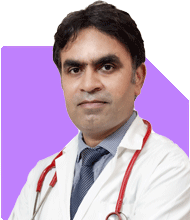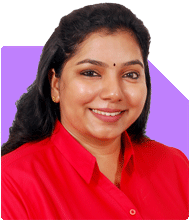I Want to Retire at 52, Do I Have Enough Money?
Ramalingam Kalirajan |6675 Answers |Ask -Follow
Mutual Funds, Financial Planning Expert - Answered on Jul 25, 2024
He has an MBA in finance from the University of Madras and is a certified financial planner.
He is the director and chief financial planner at Holistic Investment, a Chennai-based firm that offers financial planning and wealth management advice.... more

Hello, My in hand salary is roughly 1.25L pm. I am investing in MF and Equities since 2010. Total valuations stands at 71L and PPF + EPF stands at 32L. I have a son who is about to get into college next year. Keeping my aim to retire at the age of 52 please comment on how much I need to have a decent retired life. To have this amount let me know how much increase I have to do in MF
Income and Investments
Monthly in-hand salary: Rs. 1.25 lakhs.
Mutual funds and equities since 2010: Total valuation Rs. 71 lakhs.
PPF and EPF: Total valuation Rs. 32 lakhs.
Family
Son is about to enter college next year.
Appreciating Your Efforts
Your long-term investing is commendable.
You have built a solid foundation.
Retirement Goal
Retirement Age
You aim to retire at age 52.
You have approximately 8 years until retirement.
Retirement Corpus
A comfortable retirement corpus is crucial.
Estimate living expenses and adjust for inflation.
Expense Assessment
Monthly Expenses
Current monthly expenses are crucial.
Account for living, healthcare, and leisure.
Future Needs
Consider increased medical costs.
Plan for lifestyle maintenance and inflation.
Investment Strategy
Mutual Funds
Increase SIPs in diversified mutual funds.
Focus on large-cap and balanced funds.
Equities
Continue equity investments.
Actively manage the portfolio.
PPF and EPF
Continue contributions.
These provide stability and tax benefits.
Education Planning
College Expenses
Plan for your son's college fees.
Set aside funds in low-risk instruments.
Health Insurance
Adequate Cover
Ensure sufficient health cover for you and your family.
Increase cover if necessary.
Disadvantages of Index Funds
Lower Returns
Index funds mimic market returns.
They often yield lower returns compared to actively managed funds.
Lack of Flexibility
Index funds are rigid.
Actively managed funds adapt to market changes.
Disadvantages of Direct Funds
Lack of Guidance
Direct funds lack professional advice.
Regular funds offer support through MFDs with CFP credentials.
Higher Risk
Direct funds can be riskier.
Professional guidance helps mitigate risks.
Emergency Fund
Maintain Liquidity
Keep an emergency fund.
Ensure it's equivalent to 6-12 months of expenses.
Liquid Mutual Funds
Consider liquid mutual funds for this purpose.
They offer better returns than savings accounts.
Action Plan
Increase SIP Contributions
Increase SIPs in large-cap and balanced mutual funds.
Review and Adjust
Regularly review and adjust your portfolio.
Ensure alignment with retirement goals.
Continue Equity Investments
Maintain and actively manage equity investments.
Maintain Emergency Fund
Keep a sufficient emergency fund.
Use liquid mutual funds for better returns.
Final Insights
You have a strong financial foundation.
Increase SIP contributions for a secure retirement.
Continue with equity investments and maintain an emergency fund.
Best Regards,
K. Ramalingam, MBA, CFP
Chief Financial Planner
www.holisticinvestment.in
You may like to see similar questions and answers below
Ramalingam Kalirajan |6675 Answers |Ask -Follow
Mutual Funds, Financial Planning Expert - Answered on Apr 30, 2024
Ramalingam Kalirajan |6675 Answers |Ask -Follow
Mutual Funds, Financial Planning Expert - Answered on Jul 19, 2024
Ramalingam Kalirajan |6675 Answers |Ask -Follow
Mutual Funds, Financial Planning Expert - Answered on Jul 18, 2024
Dr Chandrakant Lahariya |38 Answers |Ask -Follow
Diabetologist, Consultant Physician, Vaccine Expert - Answered on Oct 18, 2024
Dr Chandrakant Lahariya |38 Answers |Ask -Follow
Diabetologist, Consultant Physician, Vaccine Expert - Answered on Oct 18, 2024
Dr Chandrakant Lahariya |38 Answers |Ask -Follow
Diabetologist, Consultant Physician, Vaccine Expert - Answered on Oct 18, 2024
Dr Chandrakant Lahariya |38 Answers |Ask -Follow
Diabetologist, Consultant Physician, Vaccine Expert - Answered on Oct 18, 2024
Patrick Dsouza |831 Answers |Ask -Follow
CAT, XAT, CMAT, CET Expert - Answered on Oct 17, 2024
Dr Dipankar Dutta |663 Answers |Ask -Follow
Tech Careers and Skill Development Expert - Answered on Oct 17, 2024

Pushpa R |11 Answers |Ask -Follow
Yoga, Mindfulness Expert - Answered on Oct 17, 2024
Pushpa R |11 Answers |Ask -Follow
Yoga, Mindfulness Expert - Answered on Oct 17, 2024
Pushpa R |11 Answers |Ask -Follow
Yoga, Mindfulness Expert - Answered on Oct 17, 2024
Dr Dipankar Dutta |663 Answers |Ask -Follow
Tech Careers and Skill Development Expert - Answered on Oct 17, 2024






















